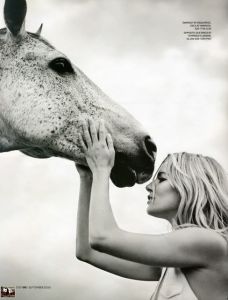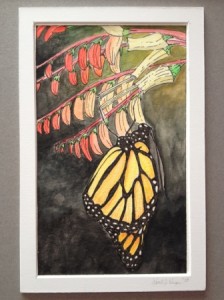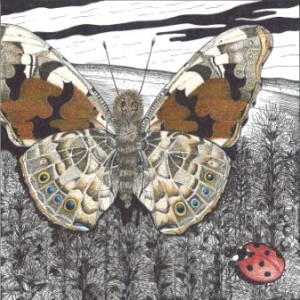When you read the title, A Picture is worth a Thousand Words, I bet most of you think of an award-winning photo. Maybe you think of the famous photo in Times Square with the sailor kissing the girl on V – J Day. Or, maybe it’s the little girl running naked and burned after the bombing of Hiroshima. Maybe it’s a more romantic image, say of Marilyn Monroe getting her skirt blown up from the air vent. The question I’d like to ask you is, what do all of these images have in common?
They each tell a story.
For this blog, I decided to do a writing exercise with you. I went to my Pinterest account where I have a board called Scene Inspiration and another one called Possible Character Images. I picked the images below and combined them together to tell a story. When I’m brainstorming or have writers block, I find it helpful to pull inspiring images that help me flush out a character, setting, etc. that I’m interested in adding to my many manuscript ideas. It especially helps when I’m just starting a project. In this case, it was because I was having trouble deciding where I wanted to go next in an existing manuscript. Stumped on one thing, it’s helpful to free-write when your creative mojo decides to take a hike, so that’s what I did. I encourage you to do the same thing if you’re having trouble.
As I was writing, something interesting happened. I’ll discuss what it was after the free-write below.
GQ Magazine UK, 15 February 2010, Sienna Miller: Out in the Open, Photo by Simon Emmett
Imgur.com, 2012, Gallery, 1000 Year Old Yew Trees in West Wales
I call it the Central Park incident. The only thing I remember of my life before then is my name, Anna Maria Bonite, and a majestic white speckled horse that felt like he was a part of who I am, and trees so gnarly, black, bloodied, and twisted, they give me nightmares. My driver’s license, which the police found in my pocket, said I was twenty-four at the time, and that I lived in New York City.
It isn’t that I don’t try to remember my life before then, it’s that I can’t. Every time I try to open up that part of my memory, it’s as if I’m drowning in a sea of emotional pain so thick, it gives me the cold sweats and shakes bad enough that the symptoms hold me immobilized in bed for days.
It has taken me a long time to control the blank pockets of time locking that part of my consciousness away even though I desperately want to know what happened before stepping into the park. What made all those memories disappear? The one and only time I entered Central Park, there was a flash of memory that brought the insidious image of the trees to life. The memory was evidently so painful my brain decided to fritz out, protecting my psyche. It felt like my head split wide-open as sharp daggers sank into my skin, then only darkness. When I woke up, it was in a bed, a week later, at Mount Sinai Hospital. The doctors told me they could find nothing wrong with me physically, but whoever I was before that day was a dark, blank canvas. I was a functional, healthy person, able to do normal things. I was perfectly educated, but with no personal identity, no memories of going to school, of friends, of where I grew up; nothing.
Lately, things have been slipping pass my hard built walls, the walls in my psyche made of layers of steel and barbed wire. I can no longer keep my fear at bay while working and I have to fight the mounting panic. If it wasn’t for the blaring horns, the racing taxis that zig and zag through traffic, pedestrians at all hours, the sounds of people jabbering on phones, friends talking at the sidewalk cafes, the construction machines moving steel and concrete through the air as I walk the paved streets of my city, I would have gone mad years ago. It’s when I’m near a living landscape surrounded by trees that my memories deliver the sharp pain.
Six years have gone by since the Central Park incident, since all the smaller attacks in between.
Because of my “condition”, I’m not able to hold down a job for very long. Employers don’t take too kindly to me being absent more than a couple days a month. Well, okay, more than a couple days a month. Looking back on that morning getting fired never got any easier.
***
“I’m sorry, Anna Maria. I’m gonna have to let you go,” my latest boss mumbled while looking at his scuffed shoes. He felt bad, she knew. They always did.
I heard his words and I felt the weight of them on my shoulders. Was I surprised? No. That’s why that morning I decided for a change of scenery. The words still hurt though.
That morning, when the sun leaked into my tiny Manhattan apartment, I crawled out from under my favorite white satin sheets and down comforter–my only luxury– and made my first cup of coffee. Wandering over to the map, tacked to the wall, the fifty states stood out in a pastel array of colors. Lifting my mug, I blew out a breath, watched the steam float away, and took a sip, hoping my first delicious swallow of Columbian goodness would help me decipher my troubled thoughts.
“Where should I go?”
***
I didn’t want to leave New York, but I was feeling a pull in my gut toward something, I just didn’t know what. My eyes kept drifting toward the west coast but eventually they moved over the map’s mitten state. I felt it in my stomach, a small flutter getting wilder and wilder every time my eyes landed on Michigan.
A shiver raced up spine and out my fingertips. There were too many trees in Michigan. Why was my brain telling me to go there?
Maybe if I moved to a larger metropolis, I would be okay.
Moving closer to the map, scanning the bigger cities, my eyes landed on Detroit. It was no Manhattan, but I could make it work. I just had to forgo all the great parks that the state touted.
Another sip of coffee and I made my decision. I was moving to Michigan.
Would the change in location give me answers? I didn’t know. Whatever the pull was, I had never felt it before, so my gut was my compass and I was following it.
It wasn’t quite a thousand words but it was a worthwhile exercise. Because my thoughts are on the series I’m working on, the characters are always present in my mind, be it consciously or unconsciously. While writing, the Anna Maria Bonite character popped into my head and it created a new direction for her character. Right now in my story, the reader will presume she is dead. Therefore, even though I am stuck on the manuscript I’m working on now, something good happened trying to get myself unstuck.



